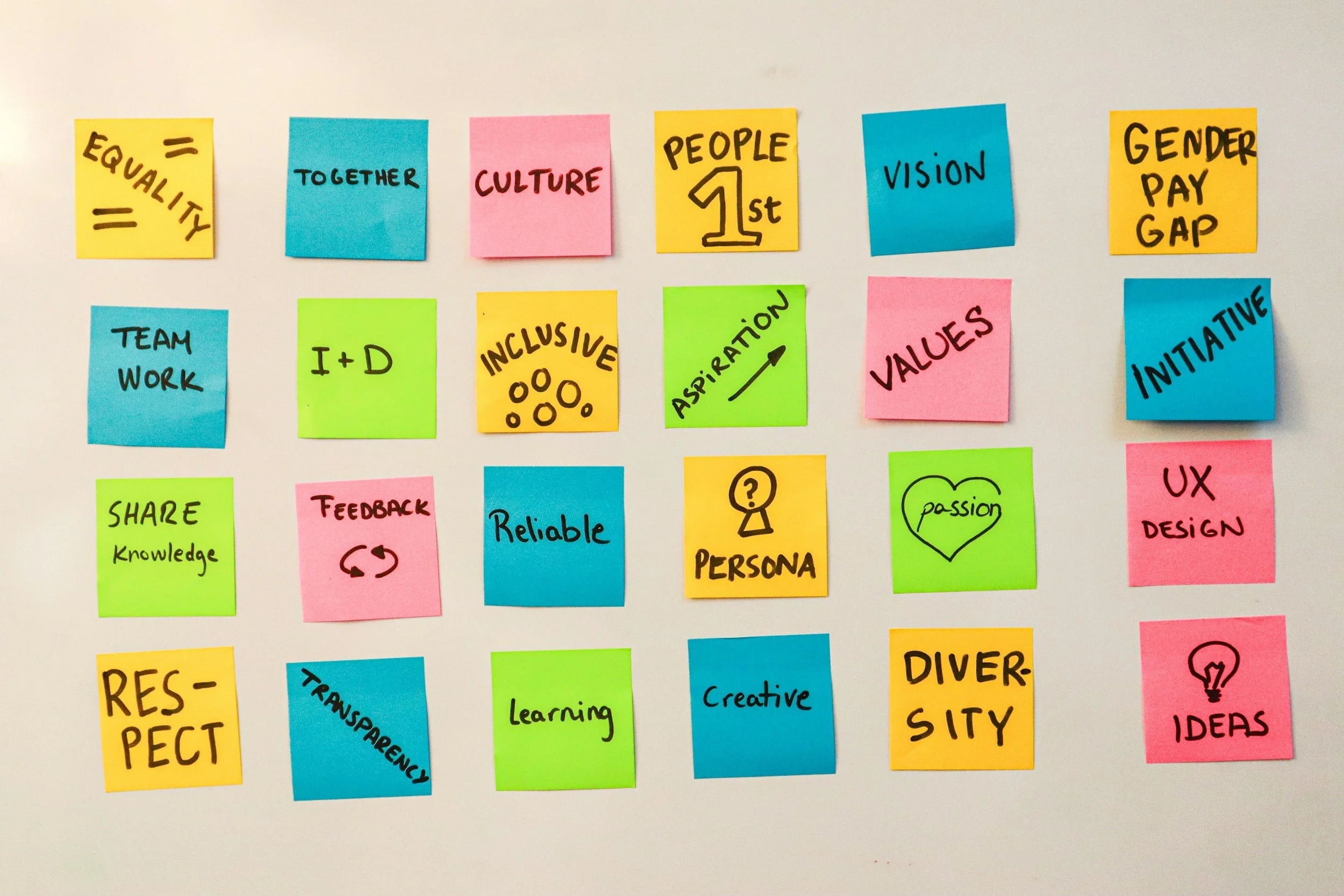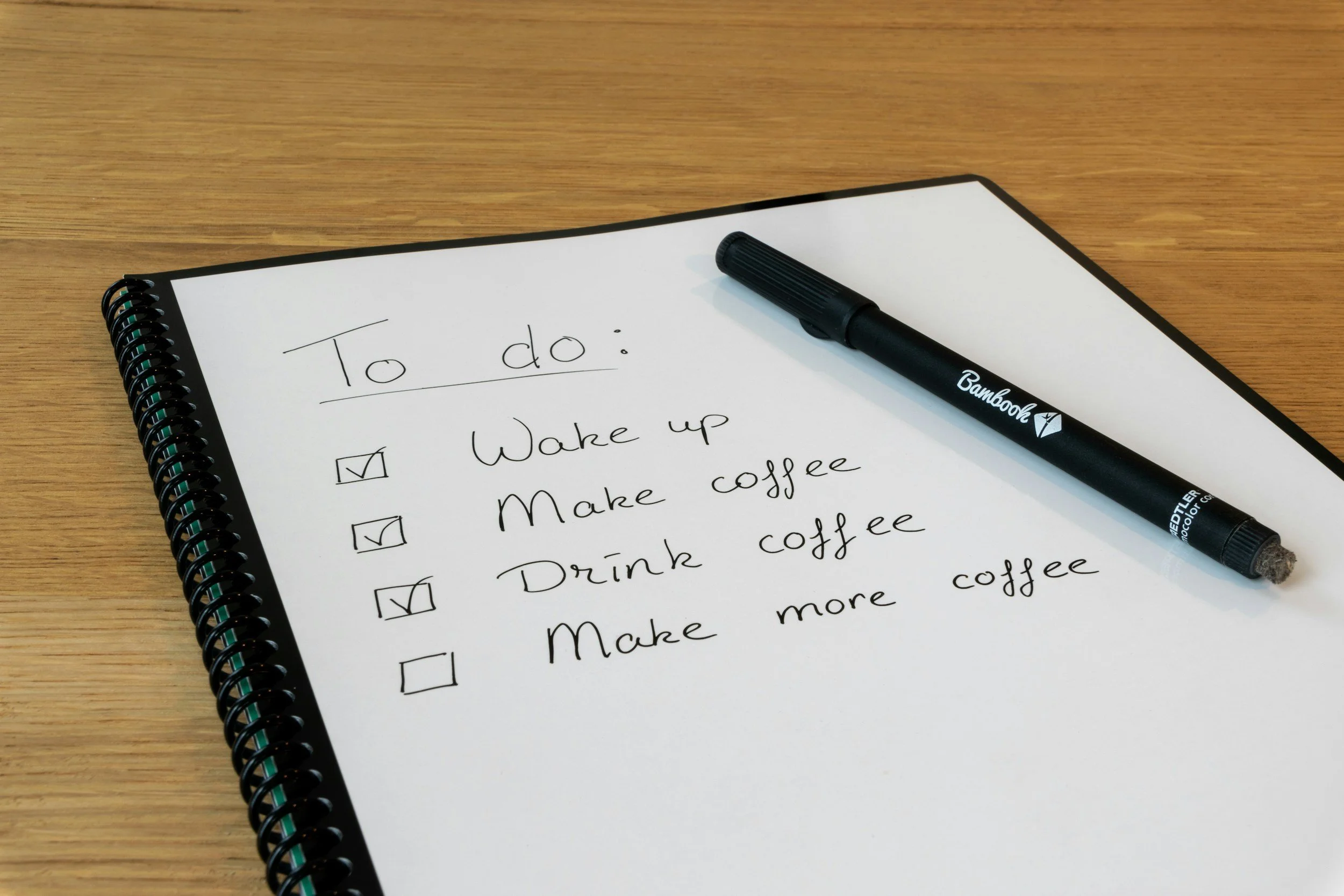Emotional Regulation
-
![Vision Boards]()
Progressive Muscle Relaxation
Starting from the feet and moving up to the head, participants tense and then relax each muscle group. This activity helps release physical tension, calm the body, and regulate strong emotions.
-
![A person practicing yoga in a seated meditation pose outdoors at sunset, with palm trees and mountains in the background.]()
Mindful Movement
Gentle activities like stretching, walking, or yoga done with attention to breath and body sensations. This practice helps release tension, reduce stress, and bring emotions back into balance.
-
![Check-In Buddy]()
Check-In Buddy
Young adults pair up with a peer to share how they are feeling in the moment. Taking a few minutes to talk with someone supportive encourages emotional awareness, connection, and regulation.
Career Direction Mapping
-
![Career Vision Board]()
Career Vision Board
Create a vision board using images, words, or drawings that represent careers, work environments, or values they want in their future. This activity encourages them to visualize their goals and reflect on what excites or inspires them most about possible career paths.
-
![A person practicing yoga in a seated meditation pose outdoors at sunset, with palm trees and mountains in the background.]()
Value Sorting Exercise
Participants use a deck of “value cards” (such as creativity, stability, independence, or service) and rank them from most to least important. This activity helps them clarify which values guide their choices, making it easier to evaluate if a career will feel meaningful and fulfilling.
-
![Check-In Buddy]()
Career Roadmap Timeline
On a large sheet of paper, participants draw a personal timeline with “Now,” “Next Steps,” and “Future Goals.” They fill in their possible education, training, or experiences needed along the way. This activity makes long-term goals feel more concrete, while breaking them down into manageable steps.
-
![]()
Career Personality Quiz Reflection
Participants take a personality or career assessment and reflect on the results in writing or discussion. This gives them useful language and structure to understand how their personality and preferences align with certain career paths.
-
![]()
Letter to Future Self
Each participant writes a letter to themselves five to ten years in the future, describing the kind of work they hope to be doing and why it matters to them. This activity inspires forward thinking and motivation while reinforcing the connection between present choices and future possibilities.
-
![]()
Informational Interview Challenge
Each participant seeks out and interviews someone in a career field of interest, either in person, over Zoom, or even by researching published interviews. Afterward, they share what they learned with the group. This activity builds networking skills and gives real-world insights into different professions.
Creating a Personal Self-Care Plan
-
![Career Vision Board]()
Self-Care Menu
Young adults design a “menu” of go-to self-care options:
Appetizers: Quick things (5–10 min) like stretching or texting a friend.
Main Course: Deeper care (a walk, therapy, cleaning space).
Dessert: Fun indulgences (music, bath, art, movie).
Goal: Visualize that self-care can be both small and simple. -
![A person practicing yoga in a seated meditation pose outdoors at sunset, with palm trees and mountains in the background.]()
Design Your Ideal Self-Care Day
Imagine a full day devoted to caring for your mind, body, and spirit.
What would you eat, do, listen to, avoid, or focus on?
Extension: Try to live out one part of that ideal day each week. -
![Check-In Buddy]()
My Morning & Night Routine Audit
They write down what they usually do in the first and last 30 minutes of their day.
Then they circle which habits nourish them and underline those that drain them.
Reflection: Replace one draining habit with one nourishing one this week.
Example: Swap scrolling in bed for gratitude journaling or calming music. -
![]()
Boundaries in Tech
Challenge yourself to set one healthy boundary with technology — such as phone-free meals, a 1-hour social media break, or unfollowing draining accounts.
Prompt: How did it feel to create space away from constant noise?
Time Management
-
![Career Vision Board]()
24-Hour Time Pie
draw a circle (like a pie chart) and divide it into sections showing how they currently spend a typical day — sleep, school/work, phone, chores, hobbies, etc. Then make a “goal version” showing how they want to spend their time.
-
![A person practicing yoga in a seated meditation pose outdoors at sunset, with palm trees and mountains in the background.]()
Goal Breakdown
Choose one short-term goal (e.g., “finish an essay” or “exercise 3x a week”) and break it into smaller, scheduled steps — what, when, how long.
-
![Check-In Buddy]()
Pomodoro Practice
Introduce the Pomodoro technique — 25 minutes of focused work, 5-minute break. Have them try one cycle and reflect on focus and productivity..
-
![]()
Priority Matrix
Divide a page into 4 squares:
Urgent & Important
Important but Not Urgent
Urgent but Not Important
Not Urgent or Important
sort tasks and reflect on how to spend more time on “important but not urgent” activities.
















